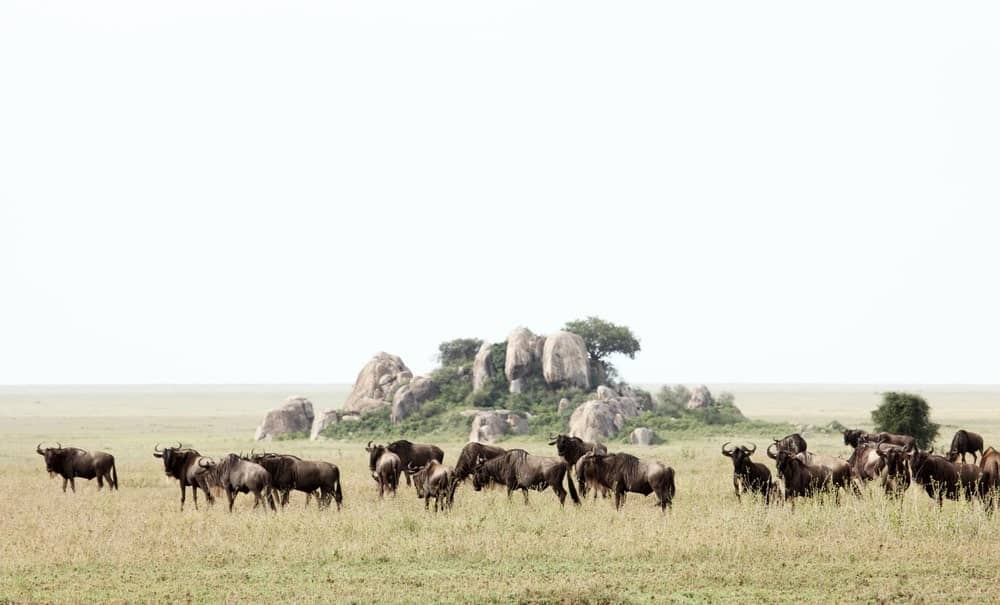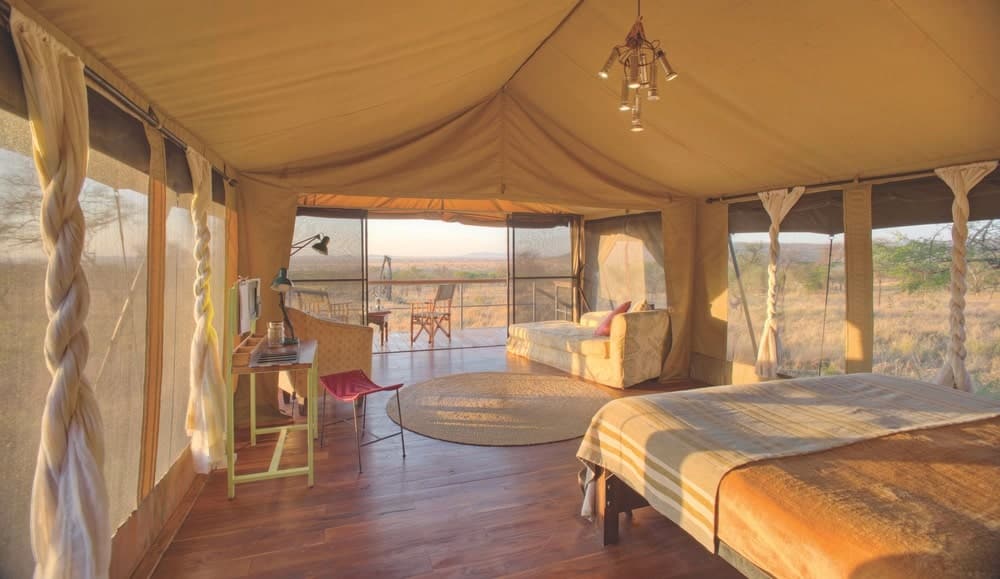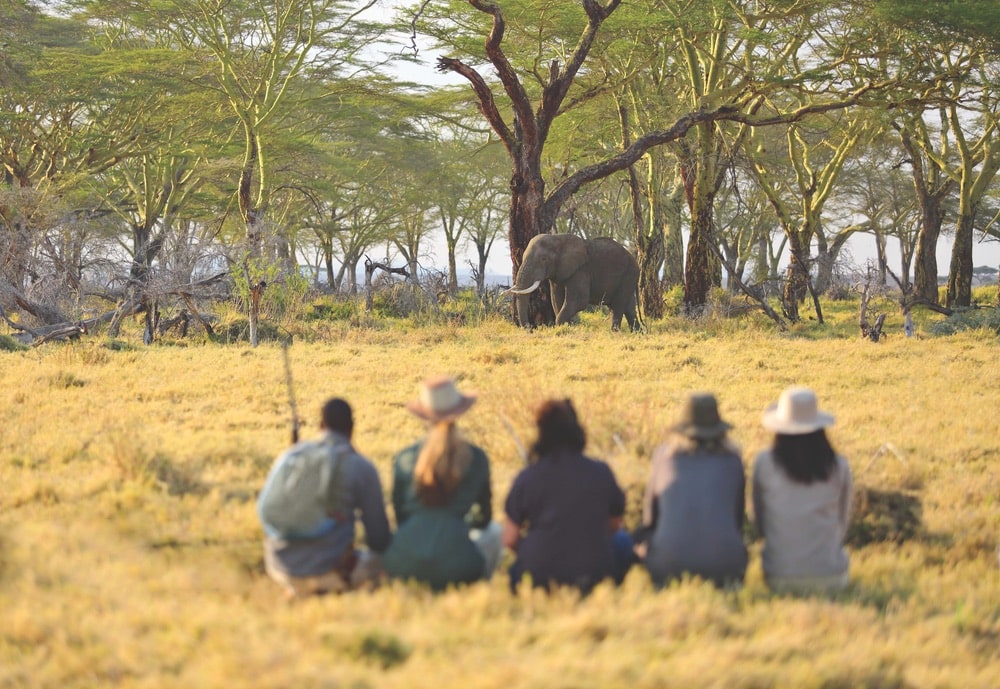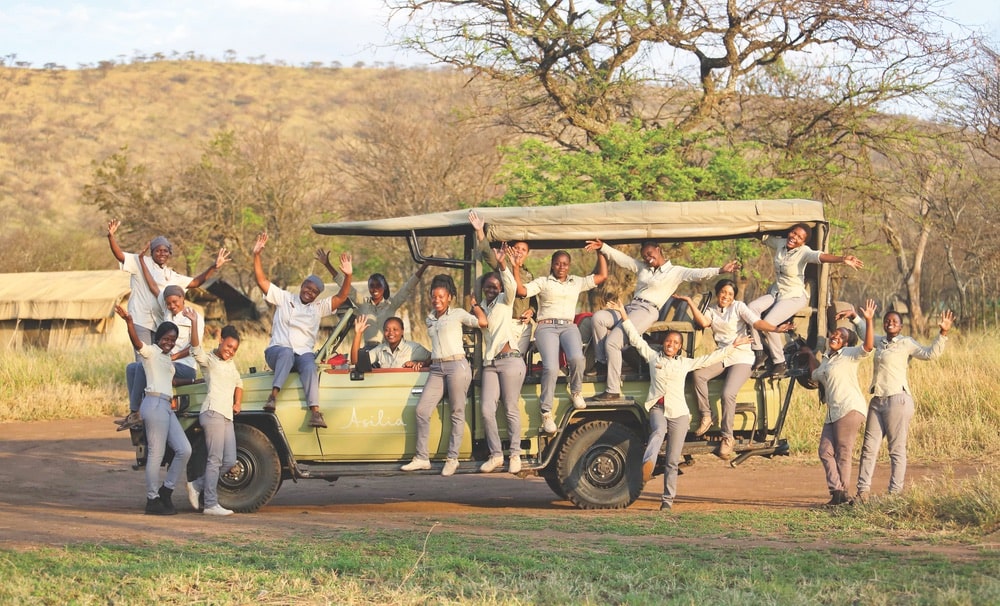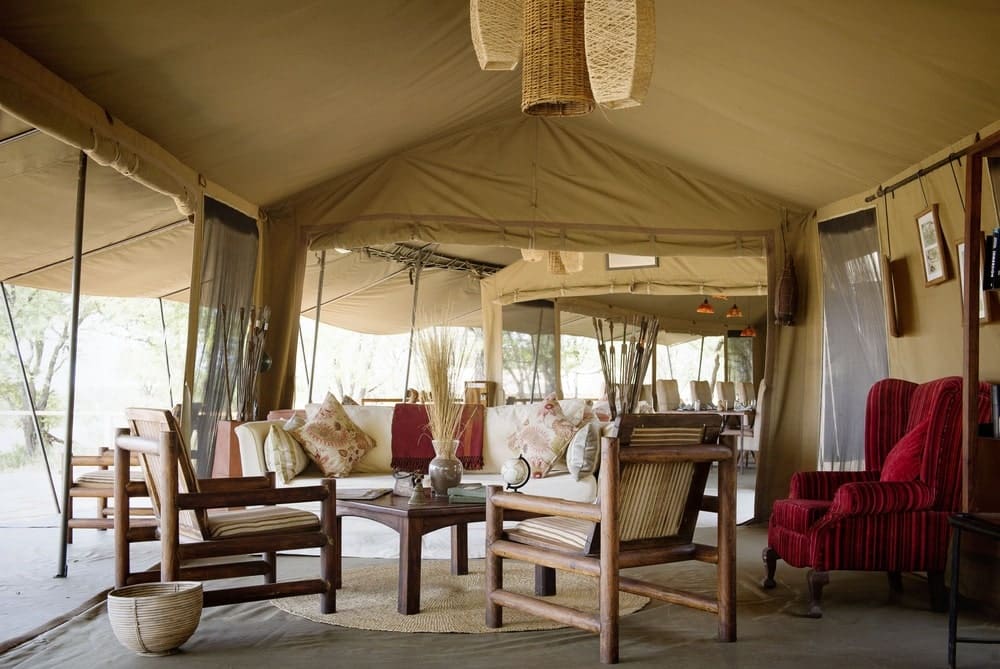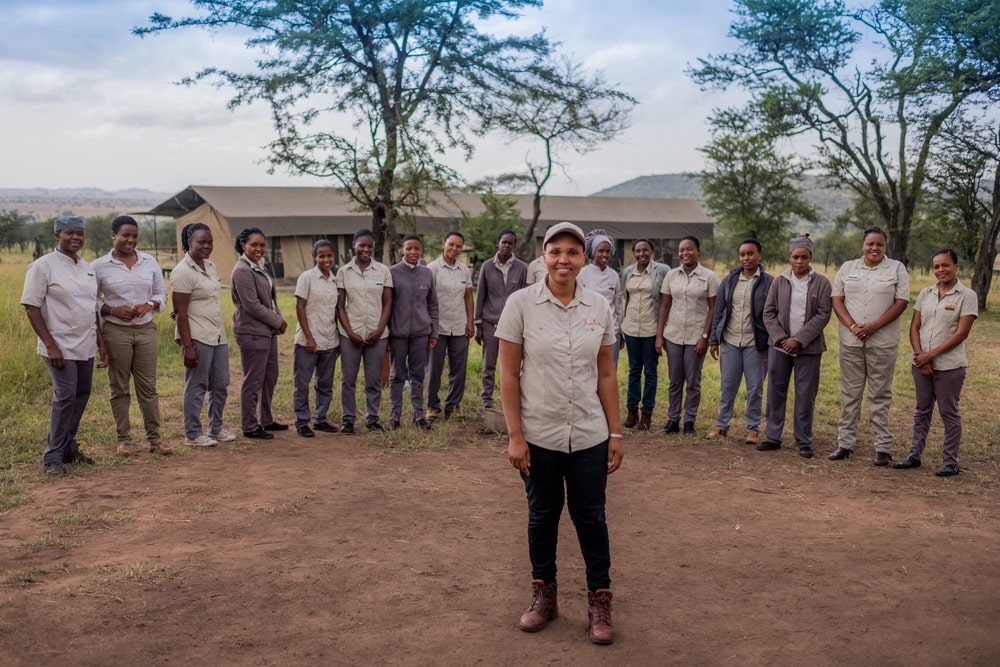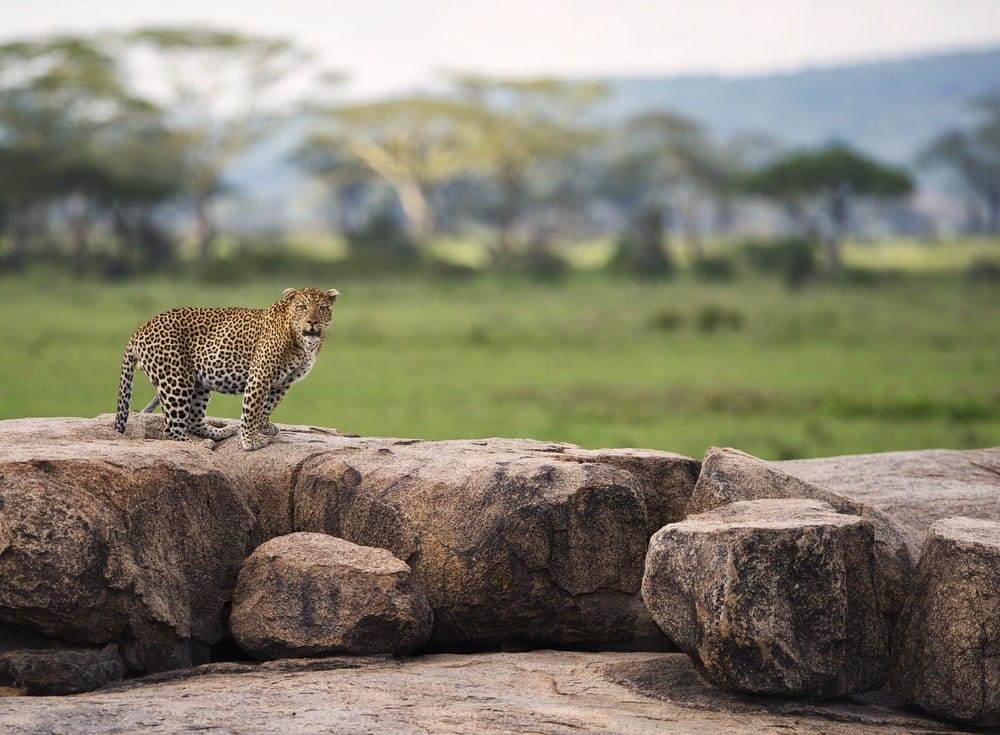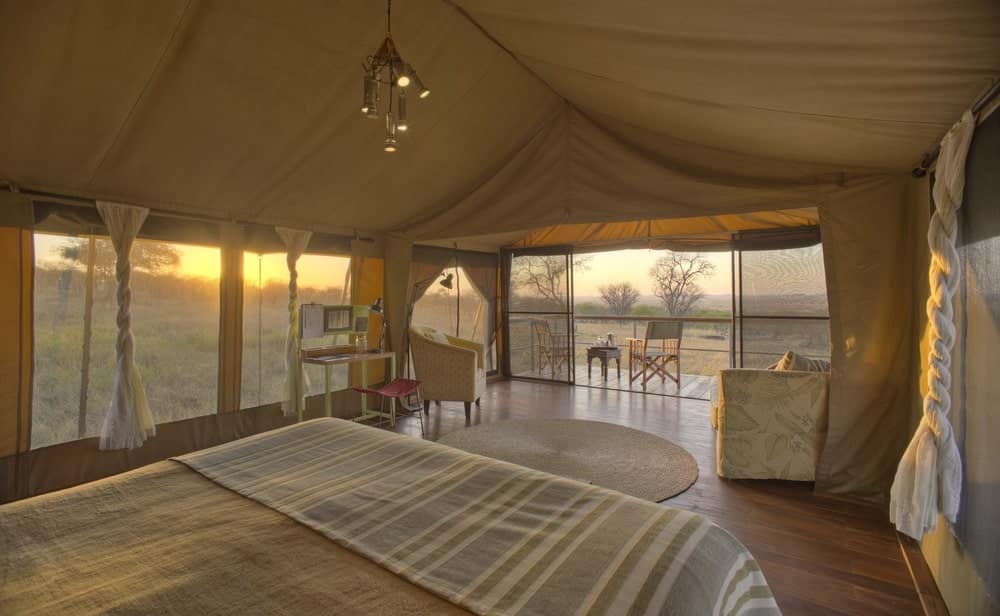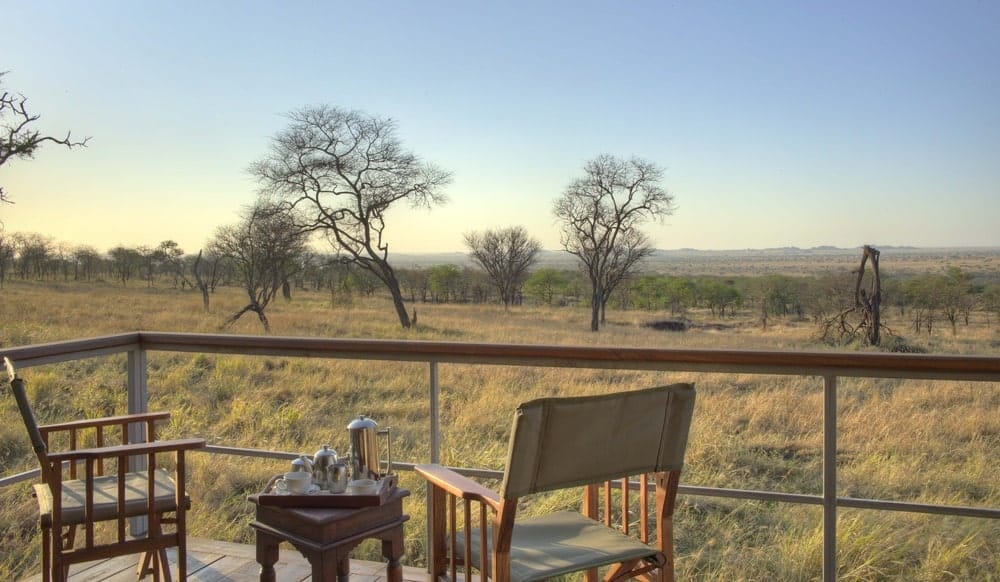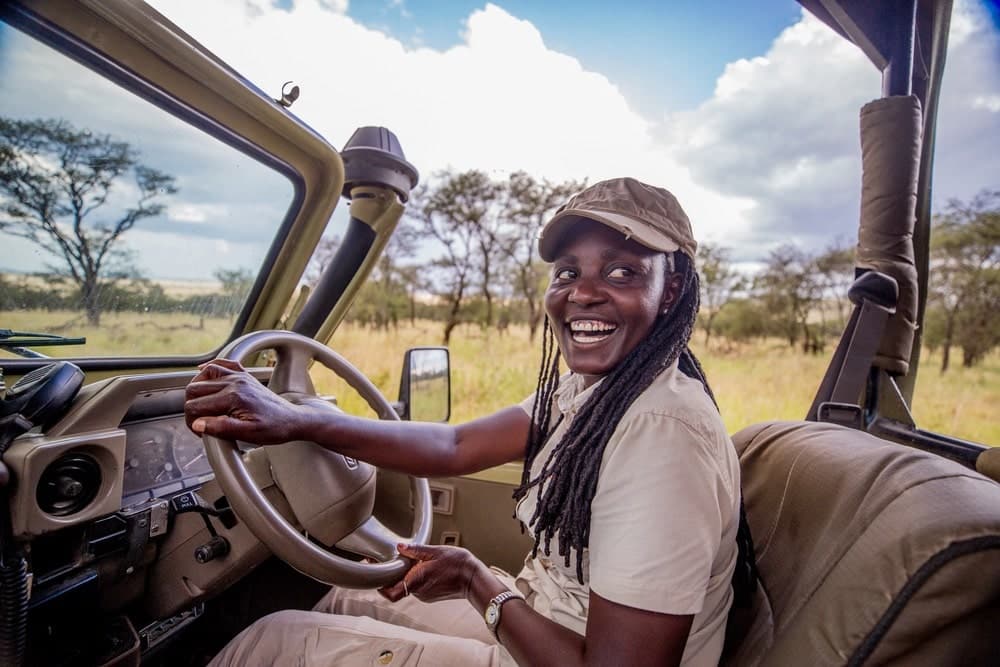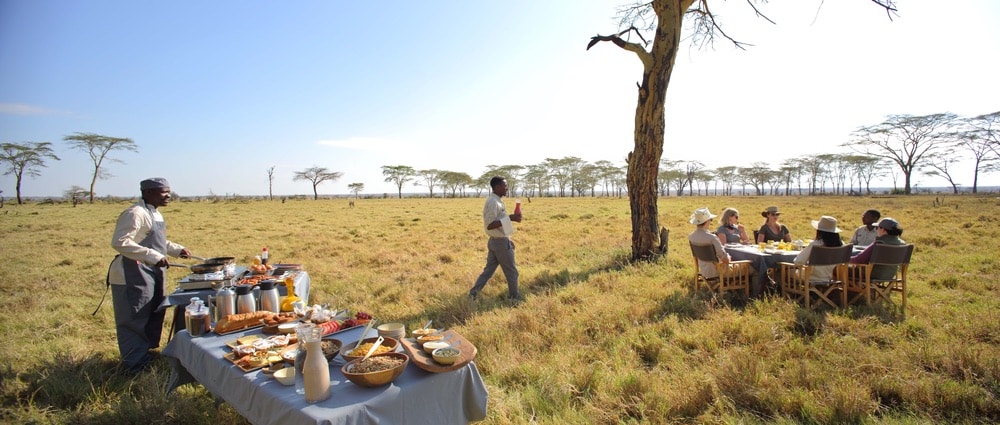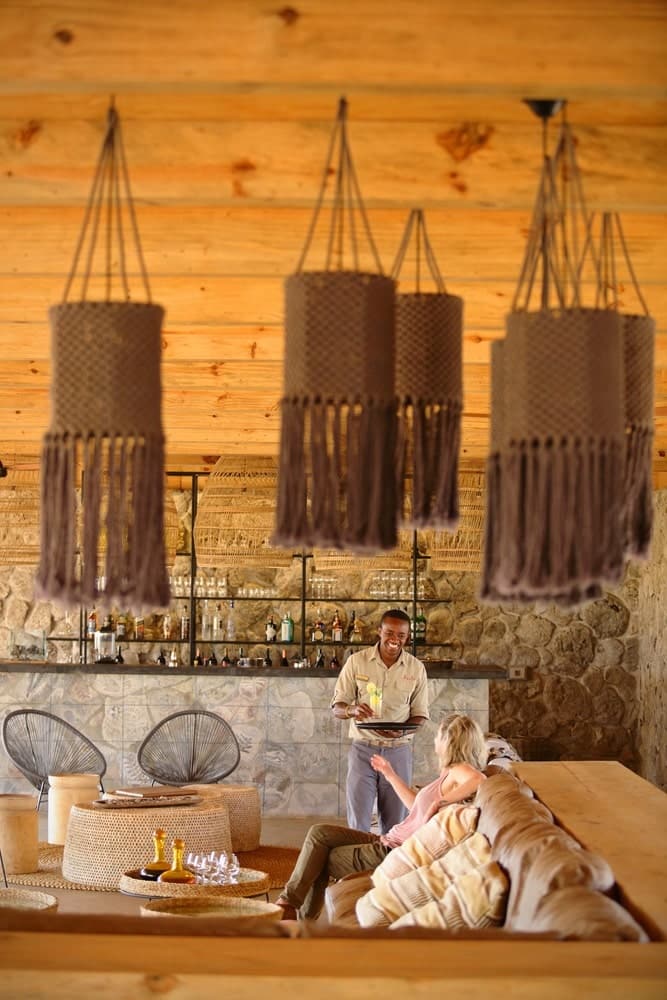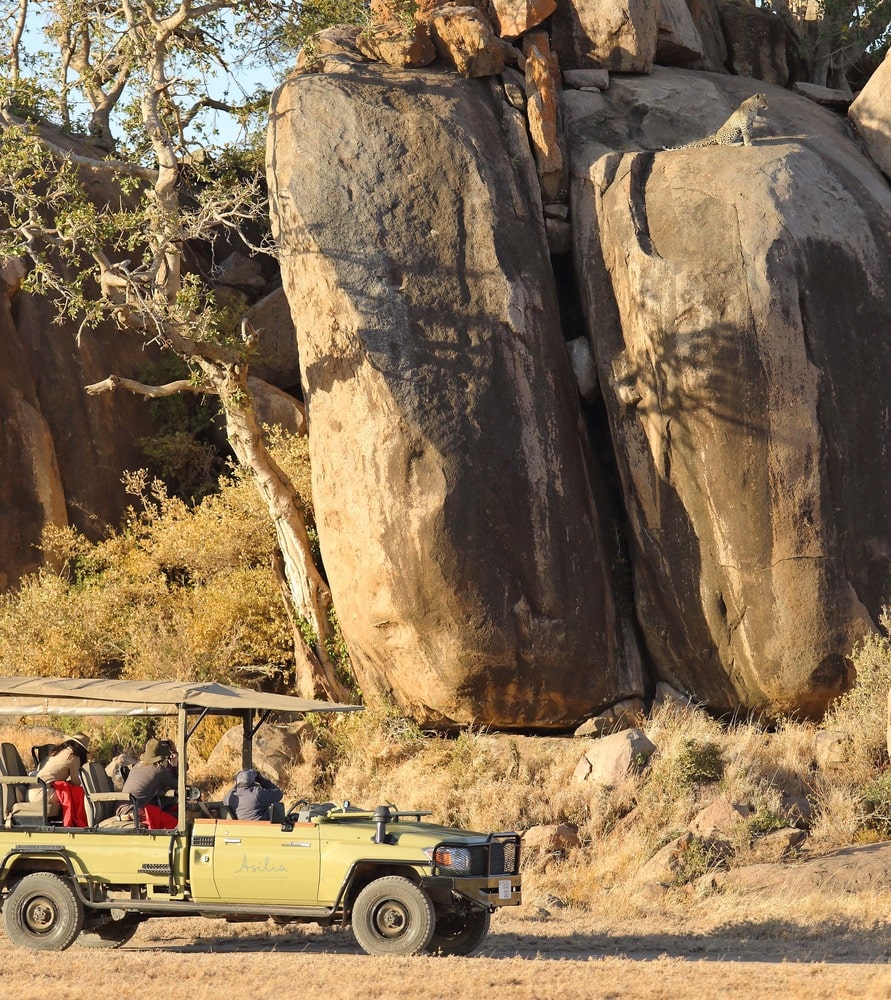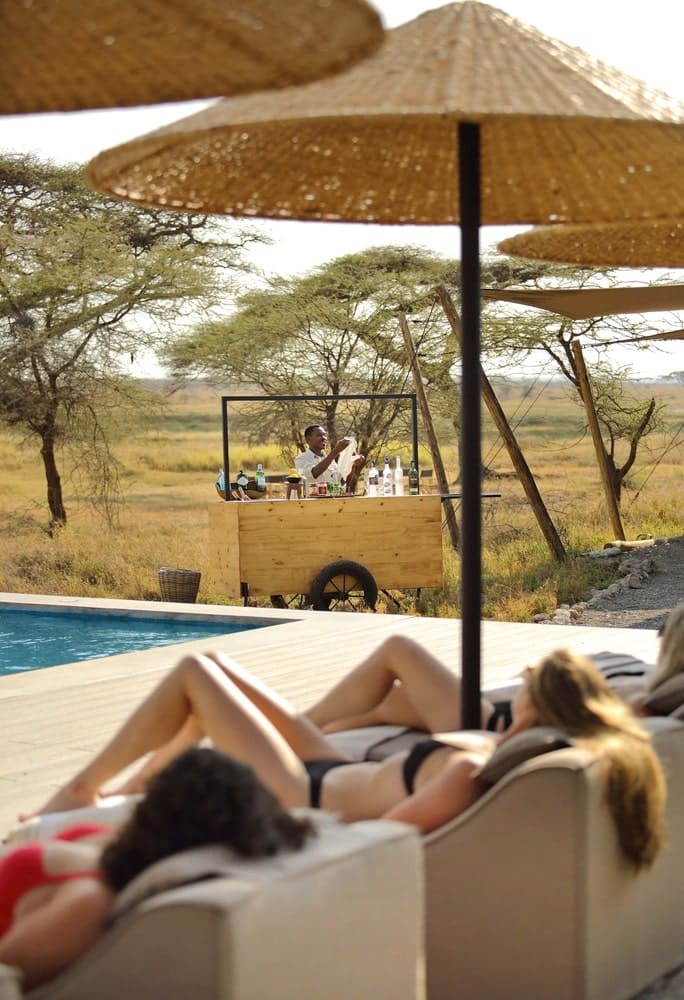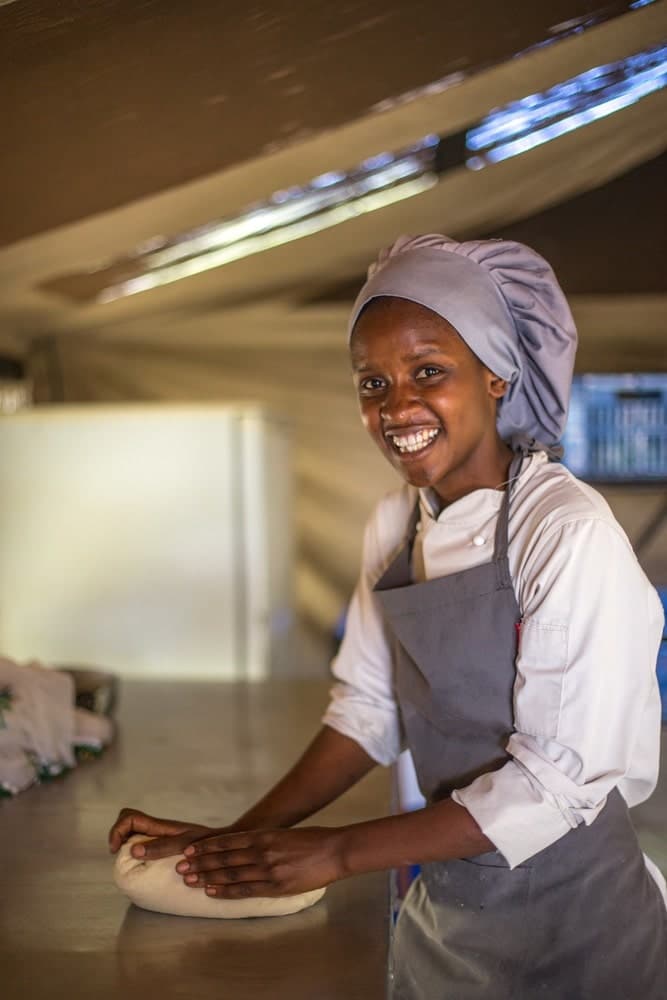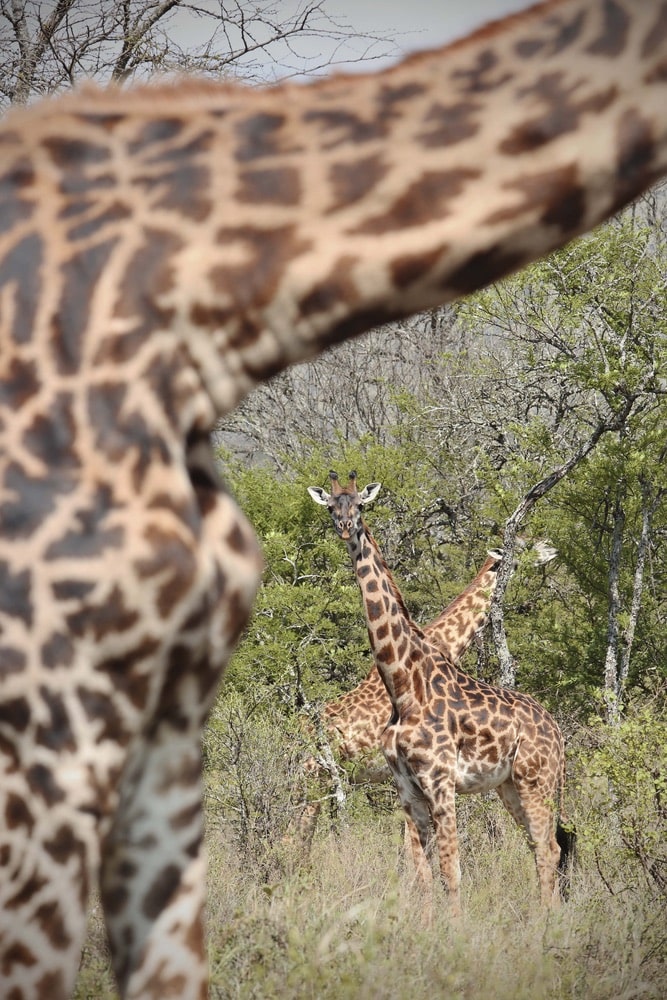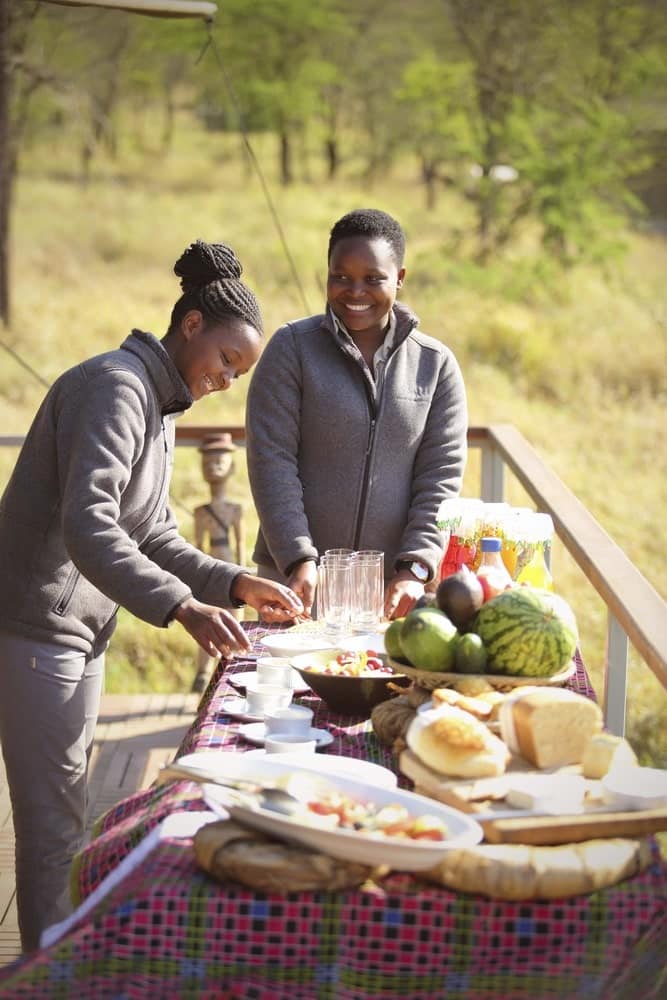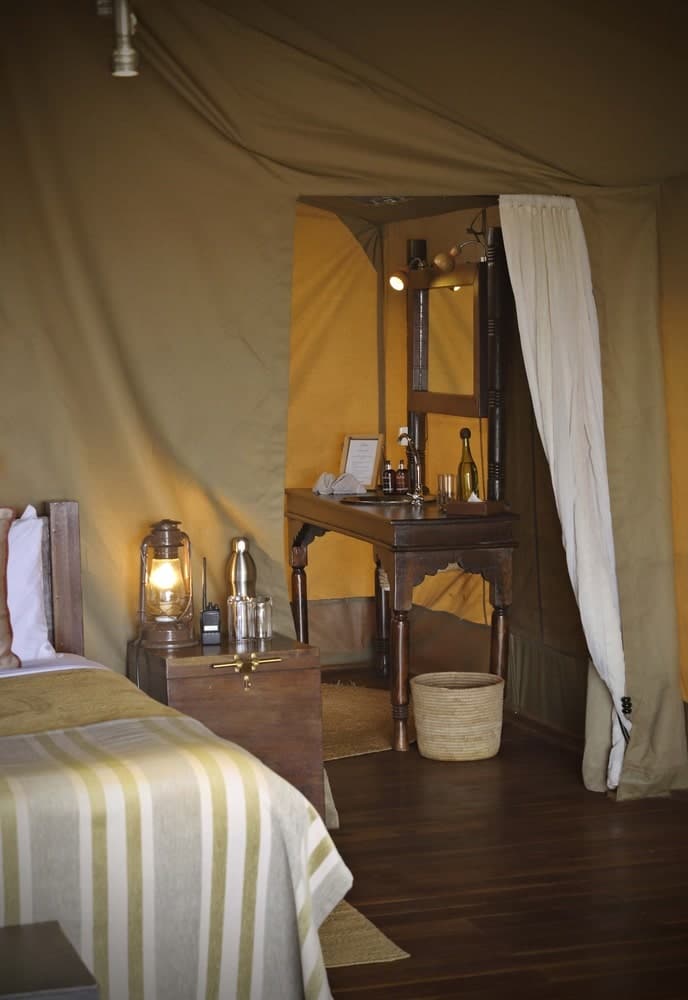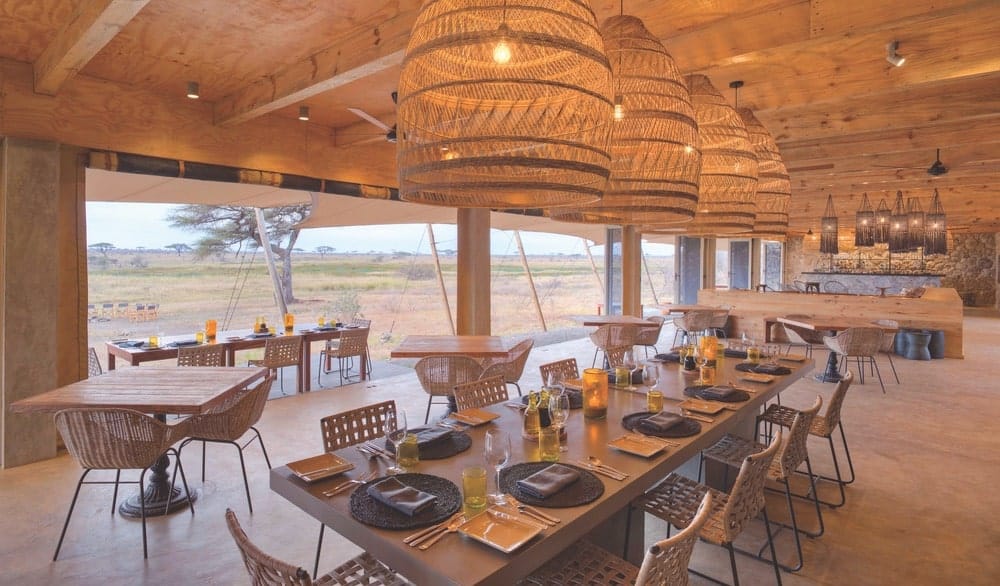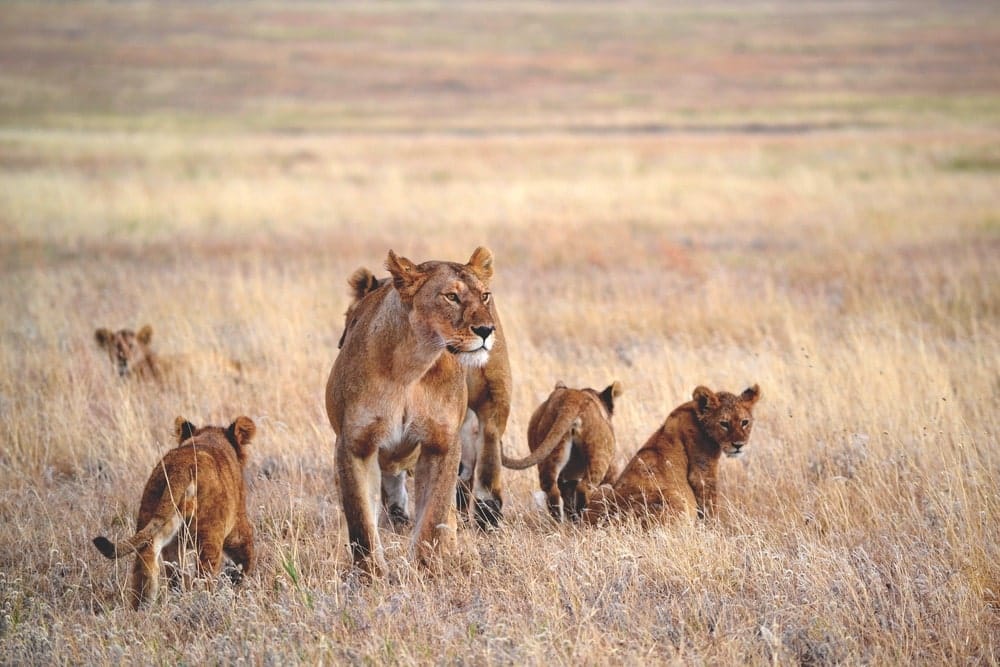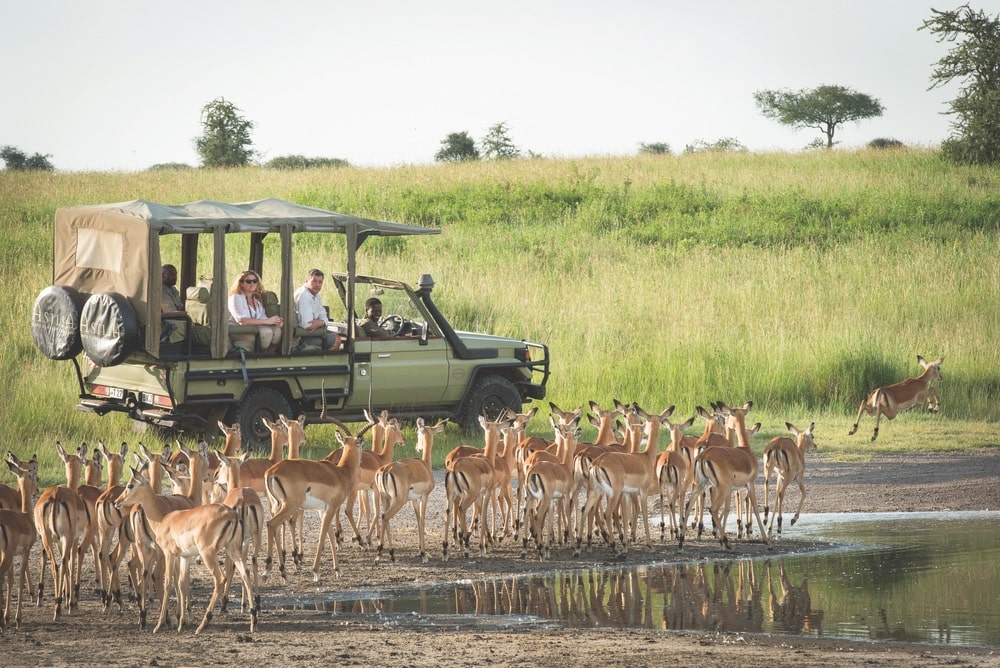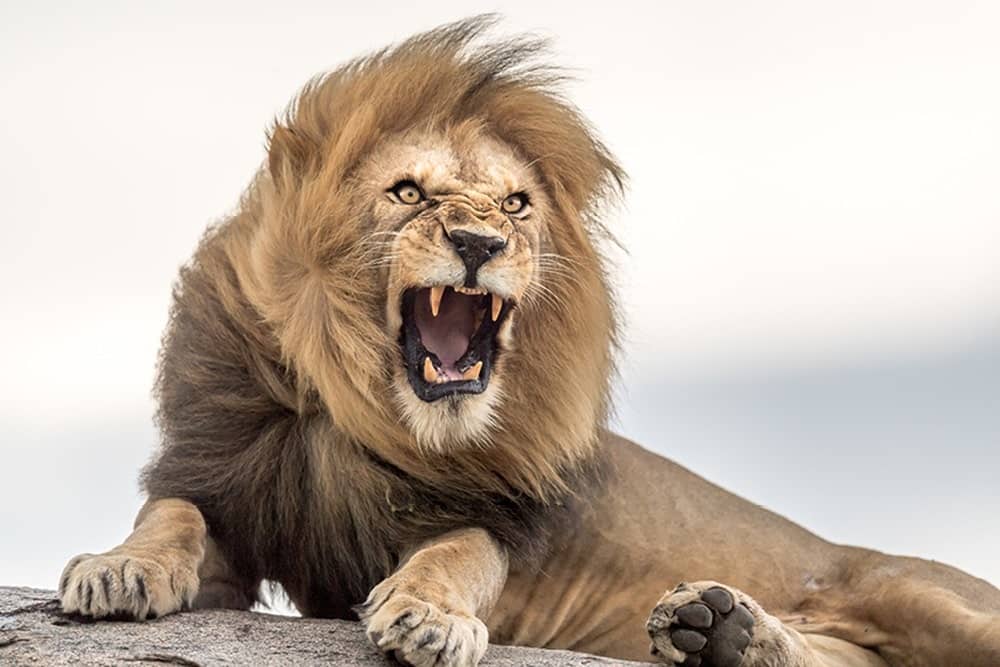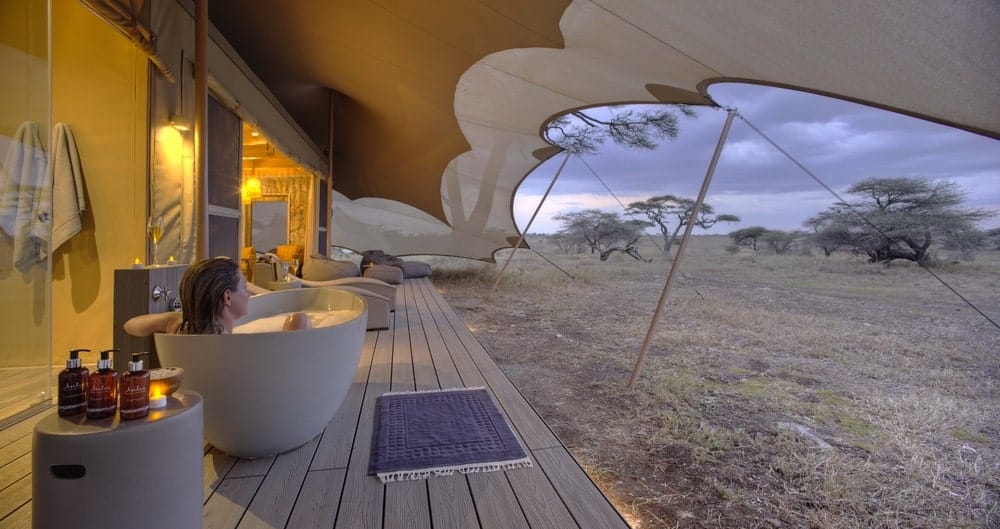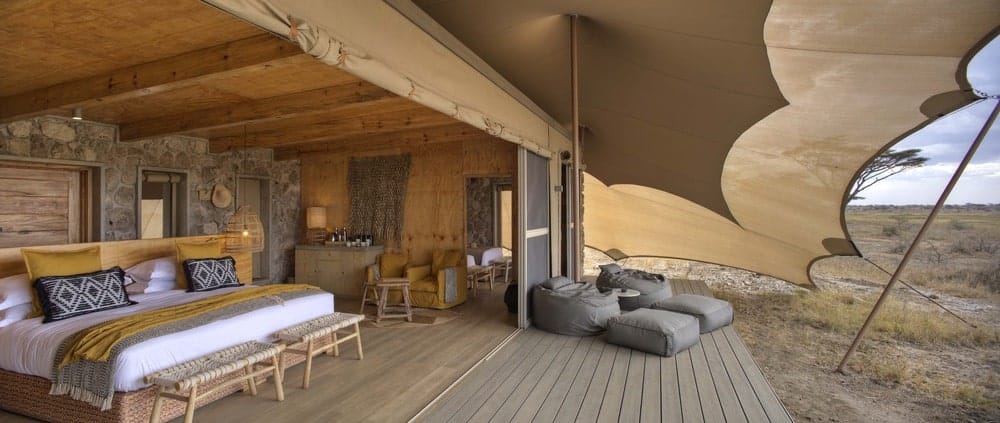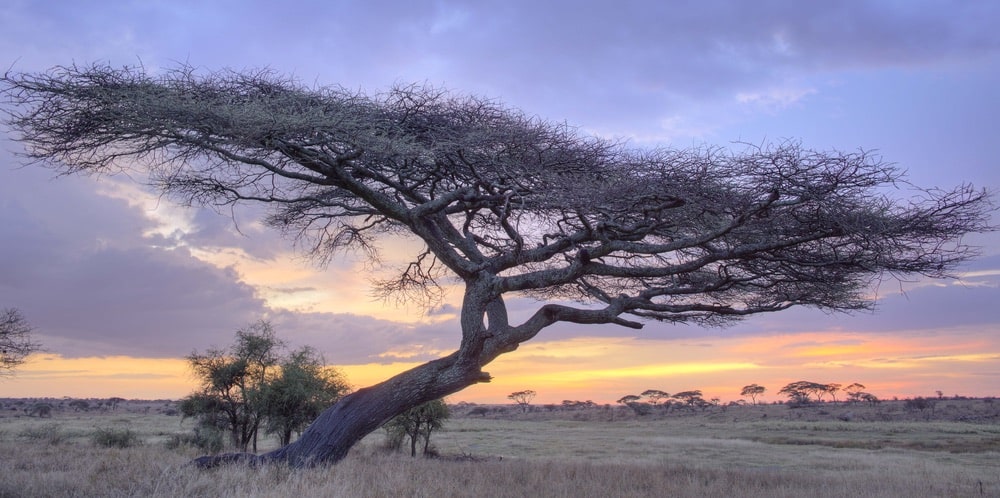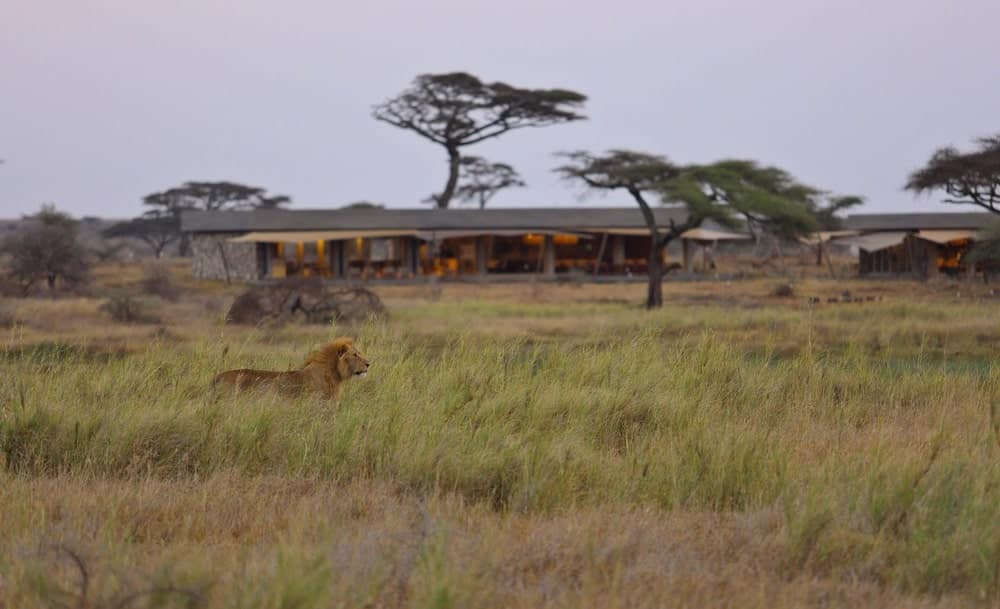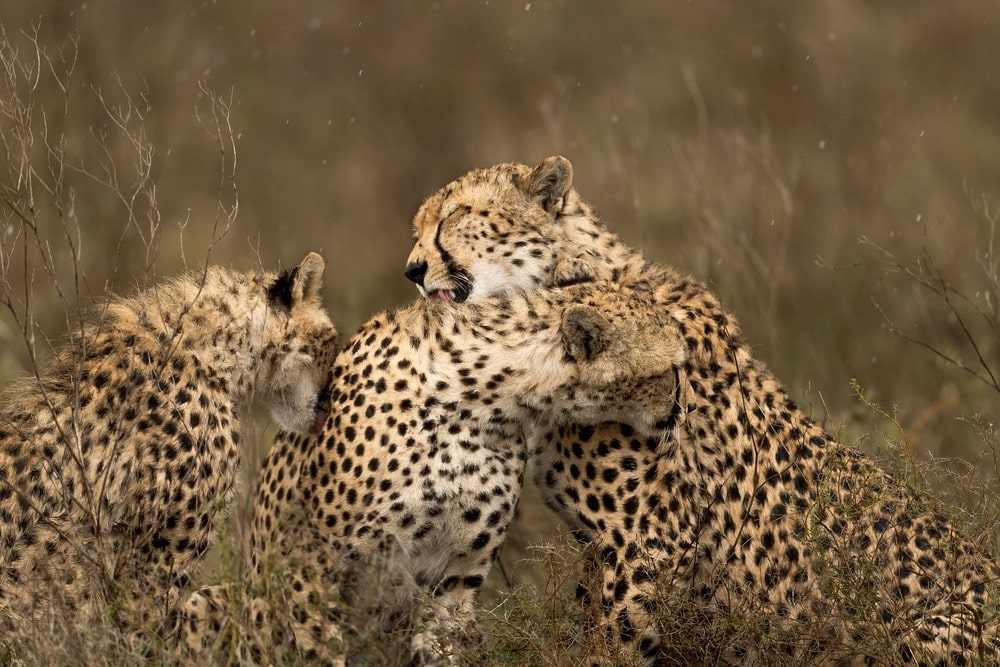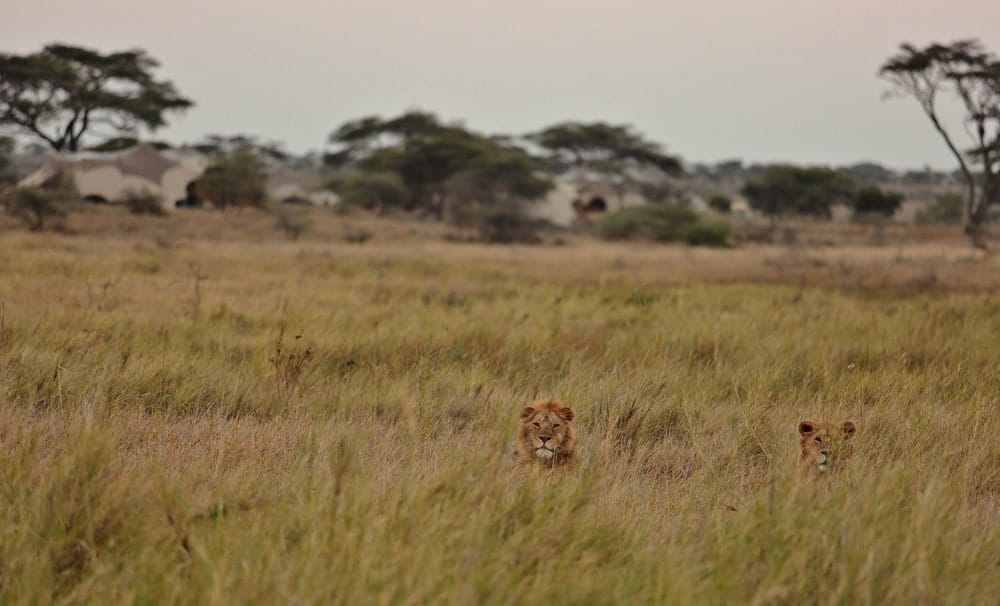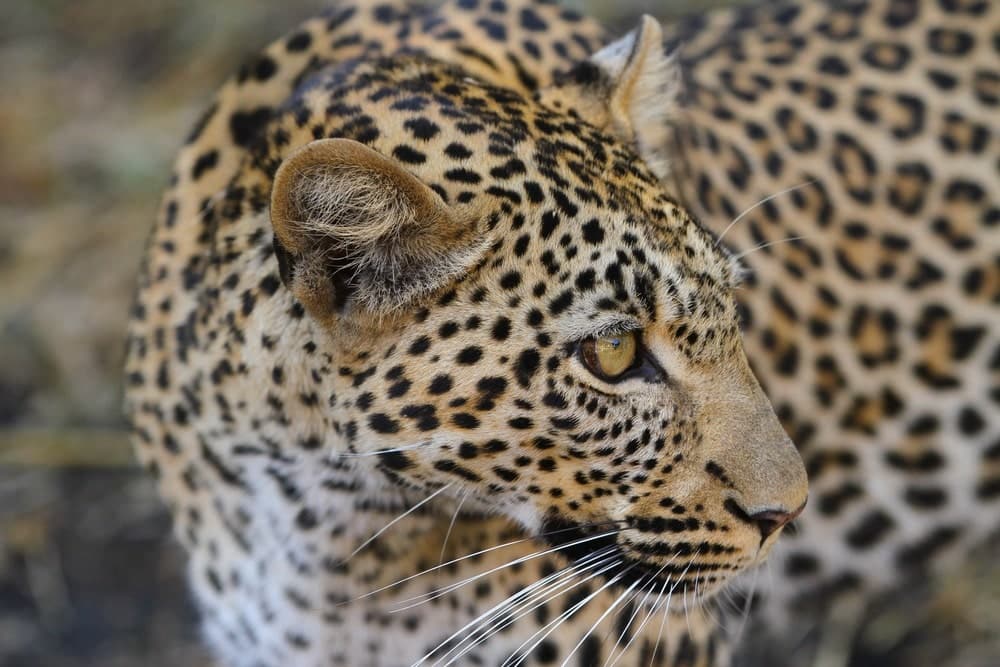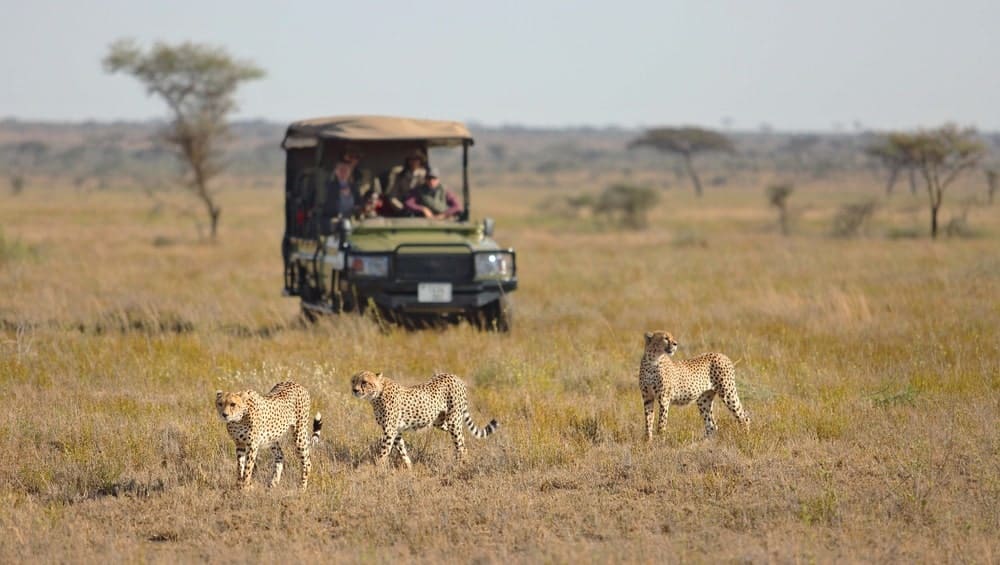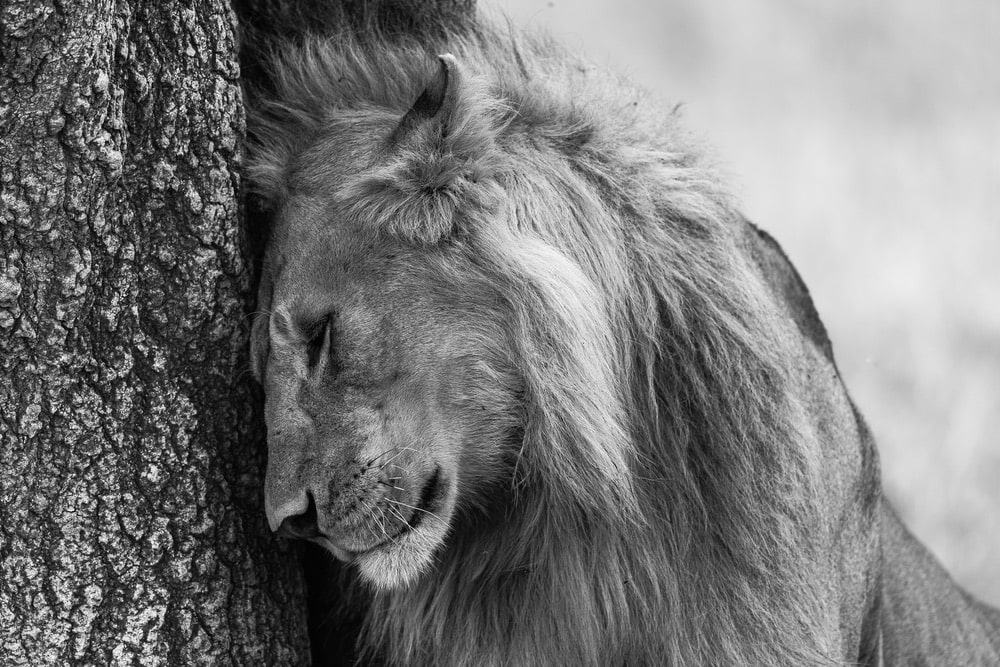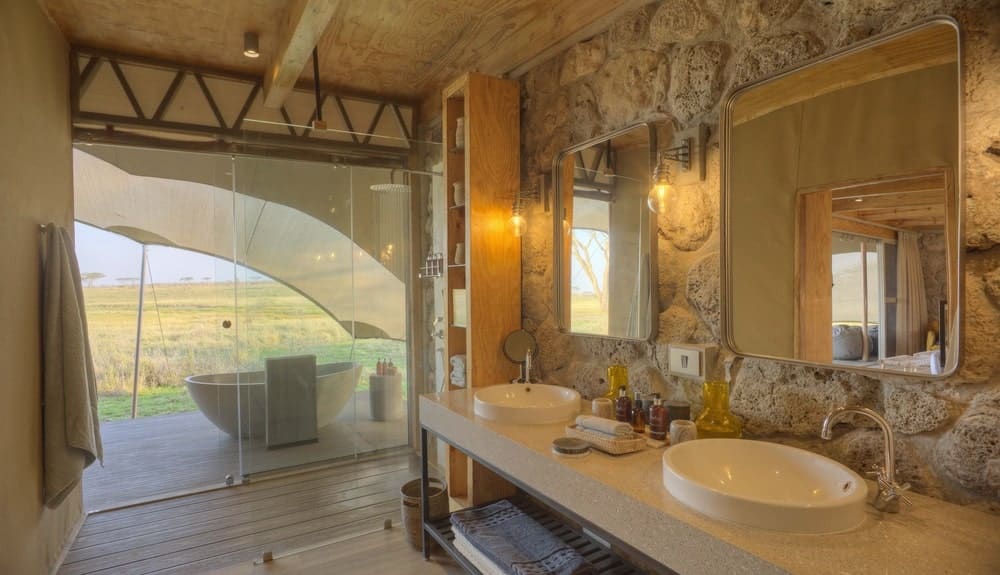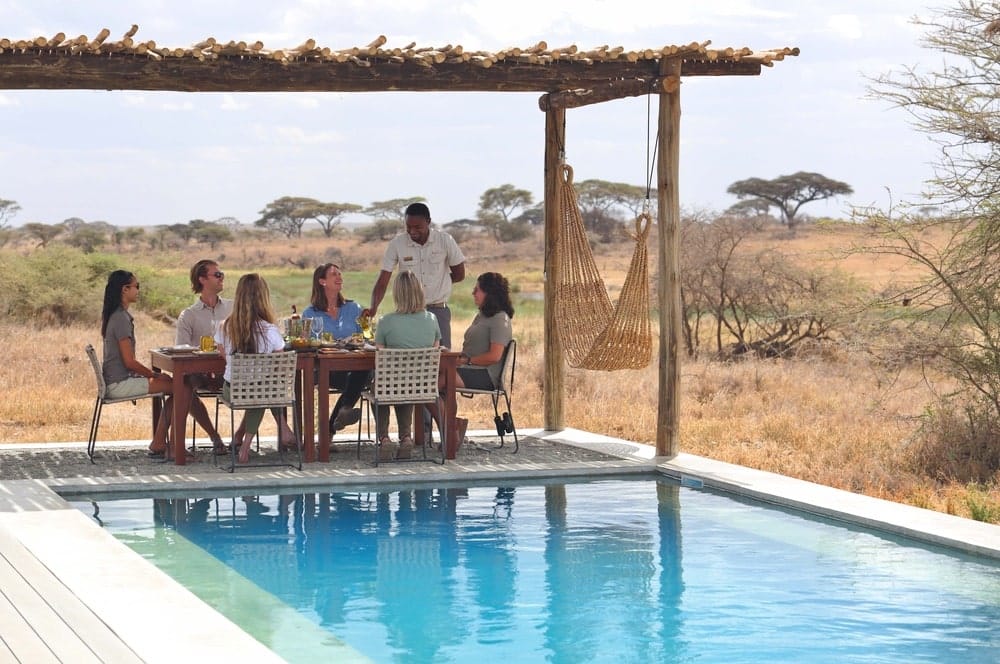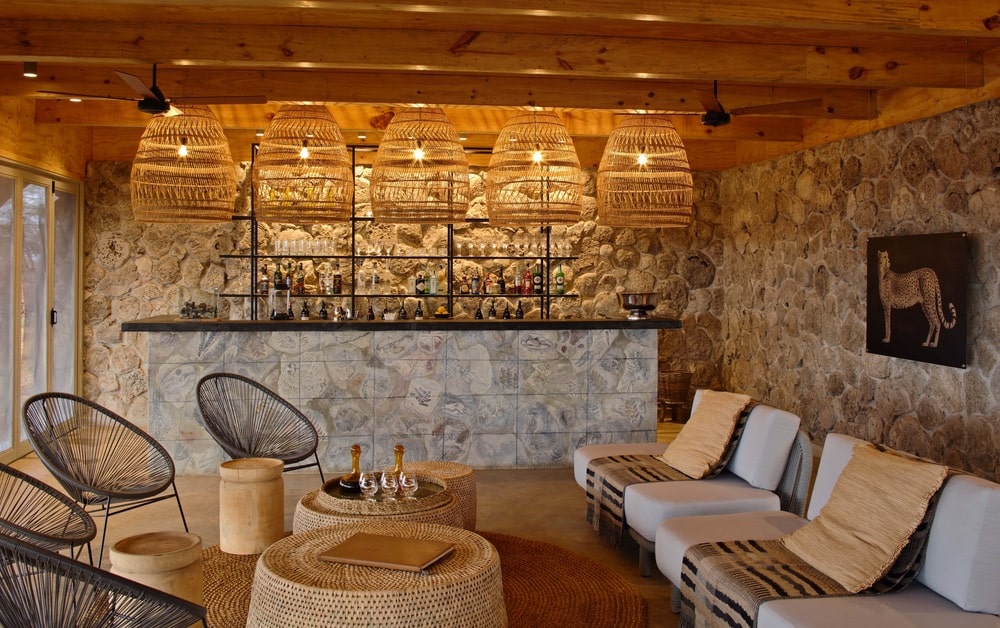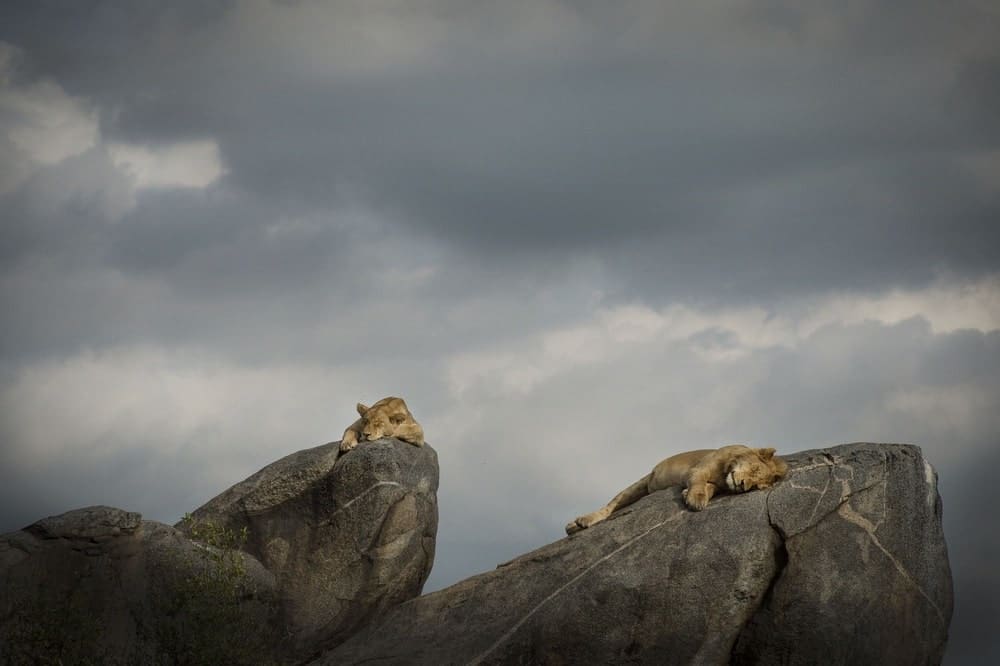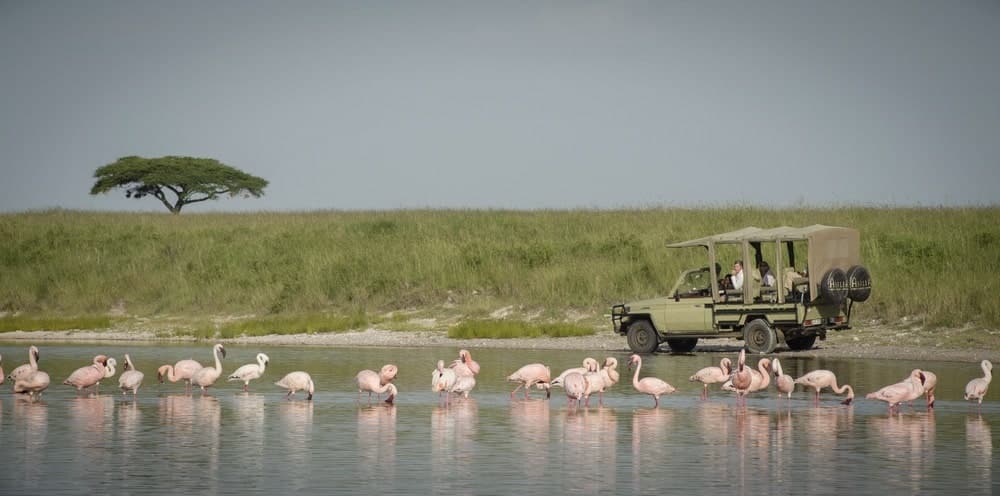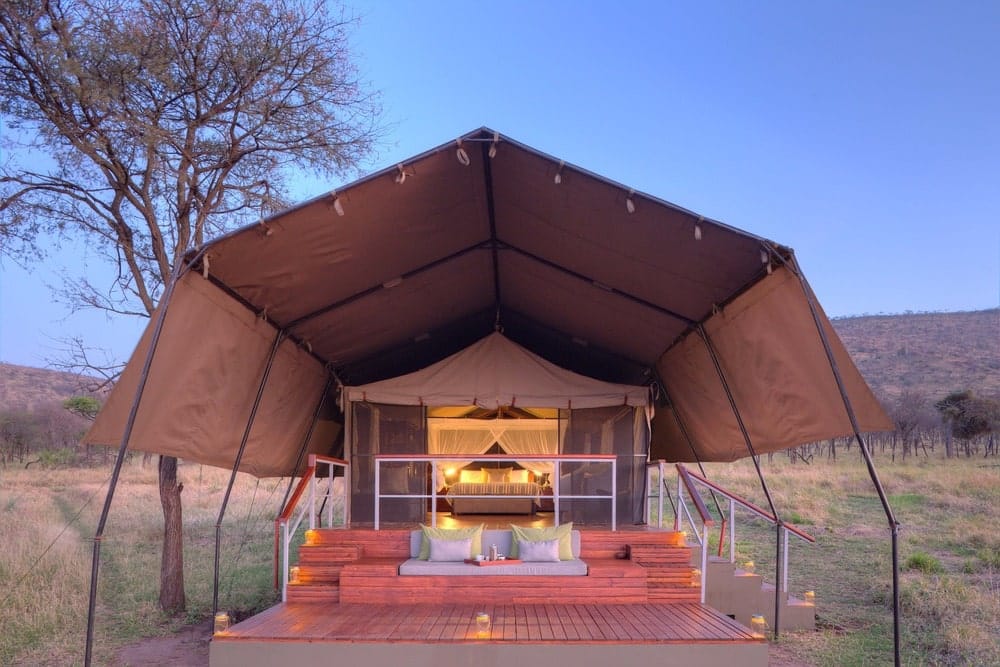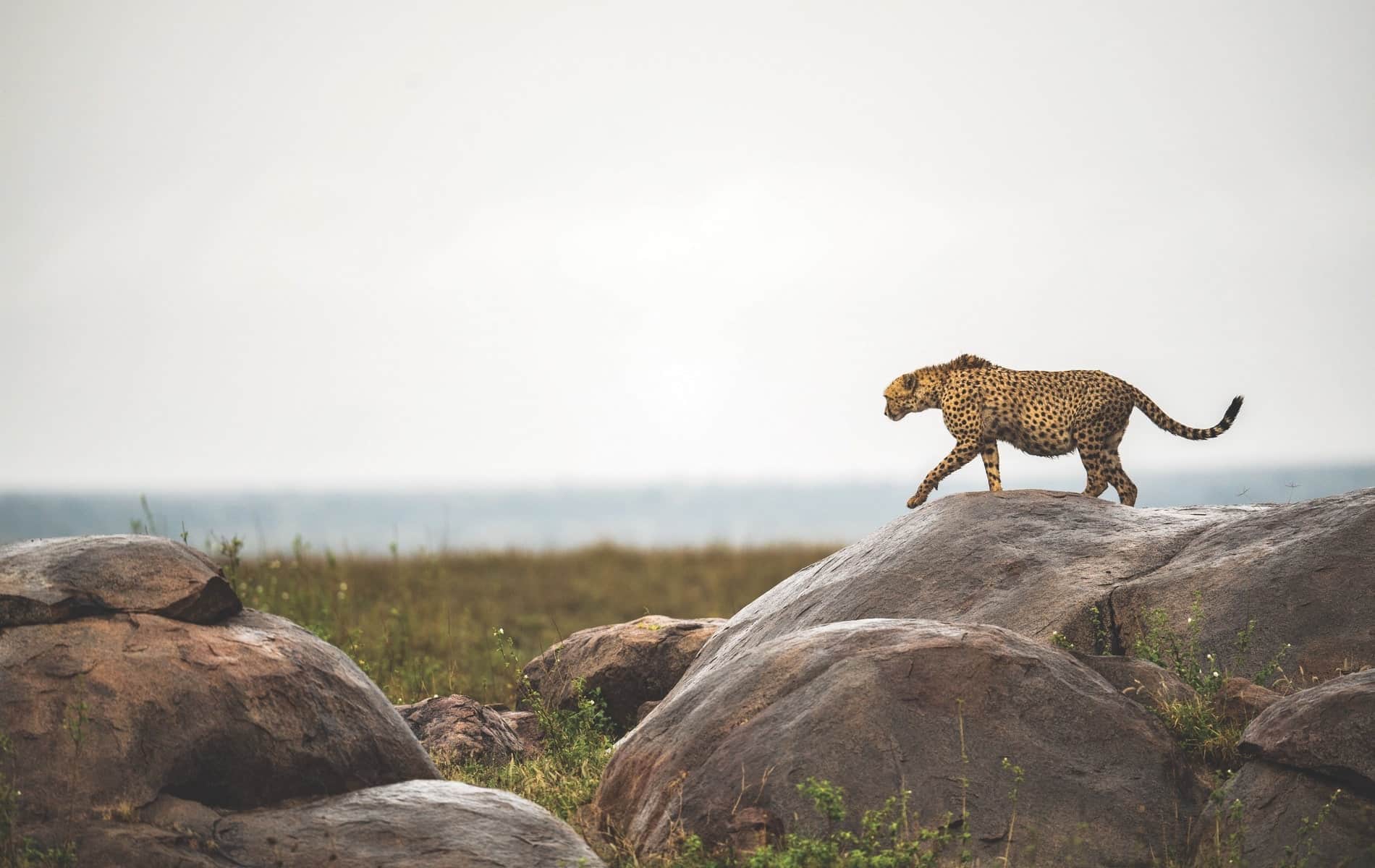
vie-magazine-asilia-africa-hero-min
The Serengeti National Park is one of Africa’s most popular safari destinations. The abundant wildlife includes cheetahs, wildebeest, lions, elephants, zebras, giraffes, and much more.
Sisterhood in the Serengeti
By Sarah Freeman | Photography courtesy of Asilia Africa
The Serengeti National Park hardly needs an introduction. Synonymous with safari, Tanzania’s most iconic national park is famed for its great migration, where unending masses of wildebeest follow the rains on a death-defying three-hundred-mile circuitous journey to Kenya’s Maasai Mara.
Strategically located on the path of this spectacular show of nature is Dunia, a 100 percent female-run, semi-permanent safari camp in the southern Serengeti. But drama unfolds year-round in the ecosystem of this protected area whose name means “land of endless space” in Maasai. The game drive tours had not officially begun during my visit. Still, in the two-hour bone-rattling transfer from Seronera airstrip to Dunia, I witnessed black-and-white plumed ostriches, dainty Thomson’s gazelles, and several Maasai giraffes defiantly crossing the road.
Set in the shadow of Moru Kopjes, the sight of Dunia’s canvas tents emerging from the scrub forest is a welcome one. I refreshed with a hibiscus drink in the mess tent’s informal dining area, bookended by a bijou bar and several very sinkable sofas, all bathed in earthy hues. The rustic safari-chic aesthetic extends to the eight tented rooms, each endowed with spacious decks to take in those acacia-studded savanna views. Inside, colonial flourishes abound, from the leather ottomans and dark wood writing desk to the weathered antique bathroom brassware and lamps. It didn’t take long for me to slip into a siesta—an essential part of the safari routine that necessitates crack-of-dawn starts. As for the wake-up call, mine was a ravenous bull elephant hoovering up fallen fruit from my tent’s shady thorn tree. The unfenced camp is exactly that, I mused.
- The Moru Kopjes and similar rock outcroppings on the savanna make the perfect lookout spots for lions and other big cats, while the great wildebeest migration is one of the Serengeti’s biggest events each year.
- A luxurious “double room” tent at Dunia camp
- Asilia Africa’s safaris at Dunia and Namiri Plains. The Dunia camp is managed by an all-female team led by Angel Namshali.
- Asilia Africa’s safaris at Dunia and Namiri Plains. The Dunia camp is managed by an all-female team led by Angel Namshali.
I was told that sixteen elephants were chased out of the camp the previous week by its staff of twenty-three women, the same ones who greeted me with rousing Swahili song and dance hours earlier. Their matriarch is Angel Namshali, who is defeating cultural stereotypes by being the country’s first female safari lodge manager, supporting her husband, son, and extended family in the process. Her father sold the family cow to bankroll her brother’s education, but now it’s Angel who finances her younger sibling’s school fees. “Overseeing its transition from an all-male-staffed camp to all female in 2016 wasn’t easy,” she admits. Together with her team members, who hail from sixteen different Tanzanian tribes, she is shifting patriarchal attitudes.
Committed to gender equality, the camp’s operator, Asilia, employs over a third of women across its managerial positions. And, in keeping with the company’s uncompromising environmental credentials, Dunia is 100 percent solar powered.
The rustic safari-chic aesthetic extends to the eight tented rooms, each endowed with spacious decks to take in those acacia-studded savanna views.
My first Tanzanian game drive was a memorable one, offering a rare snapshot of spotted hyenas (including two young cubs) looking uncharacteristically cute. Feared for their savage stalking, these social and smart slope-backed animals “play a very important role in the bush by cleaning up carrion,” our guide, Kazawadi, explained. She pointed out the mother hyena’s bloodied ear—a dead giveaway to the clan’s nocturnal feeding frenzy. Along with raising their cubs, these alpha females lead in battle and are physically stronger than their male counterparts.
We left the matriarchal clan behind and followed the high-pitched yips of two black-backed jackals to a sounder of warthogs zigzagging through the tall grass. A chorus of “Pumbaa!” rang out from another vehicle. It was the first one we’d encountered all afternoon—a bonus of visiting the Serengeti’s less tourist-riddled southern plains.
The engine hummed again, this time to take a closer look at two Maasai giraffes chomping on thorny acacia trees, a favorite snack of this endangered species. “After half an hour, they will move on,” Kazawadi revealed. “The trees protect themselves by releasing a bitter taste into their leaves.” One of twelve siblings, Kazawadi hails from Kagera province in northwestern Tanzania, bordering Uganda. “I love working with my fellow women,” she tells me. “These girls are my family.” The single twenty-seven-year-old is something of an anomaly in sub-Saharan Africa, where one in three girls marry before the age of eighteen.
Next came an opportunity to stretch our legs at Moru Kopjes, where the Serengeti Rhino Project has a visitor’s center. The head ranger, Elisha, explained to us that the project launched in 1995 as a last-ditch attempt to save this iconic species from extinction in the southern plains and has helped grow the rhino population from only two to fifty-five since then.
Chasing the last light, we arrived back at camp just in time for some “bush TV,” where guests huddle around the campfire for predinner tipples and tales of big cats under a star-studded sky. After a veritable feast of pan-fried Nile perch and lemon posset, the camp’s security (a.k.a. Sophia and Yacinta) escorted me back to my tent, where high winds drowned out the nocturnal sound track of bush barks and grunts.
The highlight was seeing a lioness nursing her four cubs on a kopje—one of the area’s two-billion-year-old isolated rock outcrops that punctuate the grassy savannas.
Bidding kwaheri to Dunia, we hit the dusty roads once more, and the scenery morphed from umbrella acacia trees to endless golden grasses waving in the sun. Our Maasai guide, Manja, pulled over to study the horizon line, spotting a lone cheetah perched on a termite mound. These towering clay castles are a favorite vantage point for the world’s fastest land mammals, which now thrive here thanks to the two-decade closure of the eastern grasslands. Our second sighting of the day unfolded over a lunch of herb-roasted barbecue chicken at Dunia’s recently renovated sister camp, Namiri Plains, which sits dramatically on the banks of a seasonal riverbed.
A more secluded spot to soak up this African panorama was from the sunken bathtub of my room’s twelve-meter-long recycled plastic veranda. Separated into east and west wings, the camp’s ten suites meld into the landscape, thanks to sandy canvas awnings stretched over volcanic rock walls. Inside, colonial decor is eschewed in favor of raw plywood ceilings, straw pendants, splashes of chartreuse, and sleek double-vanity bathrooms in shades of gray.
- The main dining room at Namiri Plains camp
- The Moru Kopjes and similar rock outcroppings on the savanna make the perfect lookout spots for lions and other big cats, while the great wildebeest migration is one of the Serengeti’s biggest events each year.
- Asilia Africa’s safaris at Dunia and Namiri Plains. The Dunia camp is managed by an all-female team led by Angel Namshali.
It didn’t take long for Namiri to live up to its Swahili name meaning “big cat.” I marveled at two glossy-maned lions and a coalition of cheetahs in the first hour of our afternoon drive. The latter (a mother and her four offspring) were sleeping off a warthog kill by the Ngare Nanyuki River just steps from our camp. While male cheetahs (typically brothers) forge lifetime partnerships, the females roam the savannas alone, covering a territory fifteen times greater than the males.
The following morning, I was ambushed with a delicious breakfast of eggs and bacon, endless pastries, and fresh watermelon juice among a grove of fever trees. These yellow-barked behemoths were named by European settlers who mistakenly thought that they carried malaria. In fact, the real problem was the mosquito habitat in the swampy ground beneath them. Thankfully, there are no whining mosquitos to ward off in daylight hours!
As the day played out, so did the drama, and Manja discovered some of the Serengeti’s more elusive inhabitants, including the Verreaux’s eagle owl, the rock python, and the rare melanistic serval, usually a shadowy creature of the night. The highlight was seeing a lioness nursing her four cubs on a kopje—one of the area’s two-billion-year-old isolated rock outcrops that punctuate the grassy savannas. They provide refuge and a lookout point for big cats, but Maasai warriors also sometimes descend on these unique “island” ecosystems to perform ceremonies. We raised our glasses with one last maisha marefu (a toast in Swahili) before the sky unfurled its inky wings and the roar of lions rumbled across the plains once more.
— V —
Visit AsiliaAfrica.com to plan your trip.
Brit-born Sarah Freeman’s appetite for adventure has taken her to some far-flung corners of the earth, from Indonesia’s remote Mentawai Islands to the snowcapped peaks of the Cordillera Blanca in Peru. The internationally published travel writer and photographer regularly racks up air miles on assignments for Bloomberg, Sunday Times Travel, and Harper’s Bazaar.
Share This Story!
KEEP UP WITH THE LATEST STORIES FROM VIE



